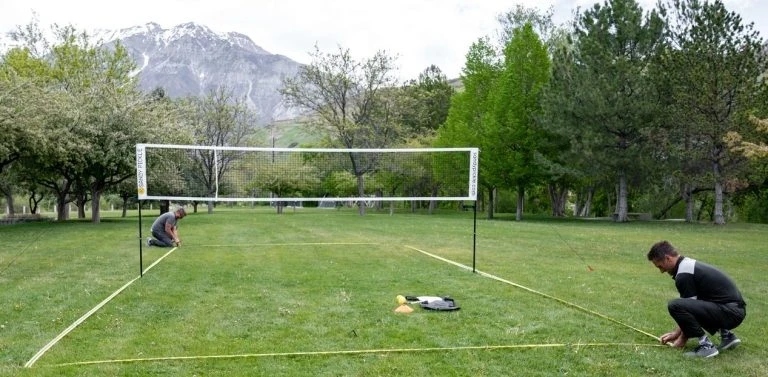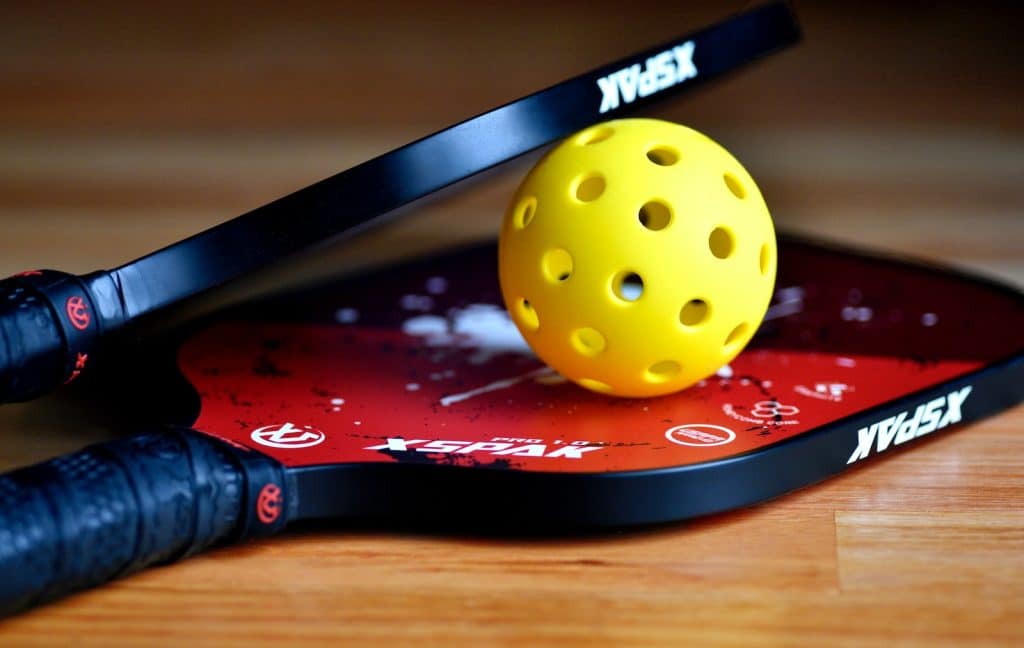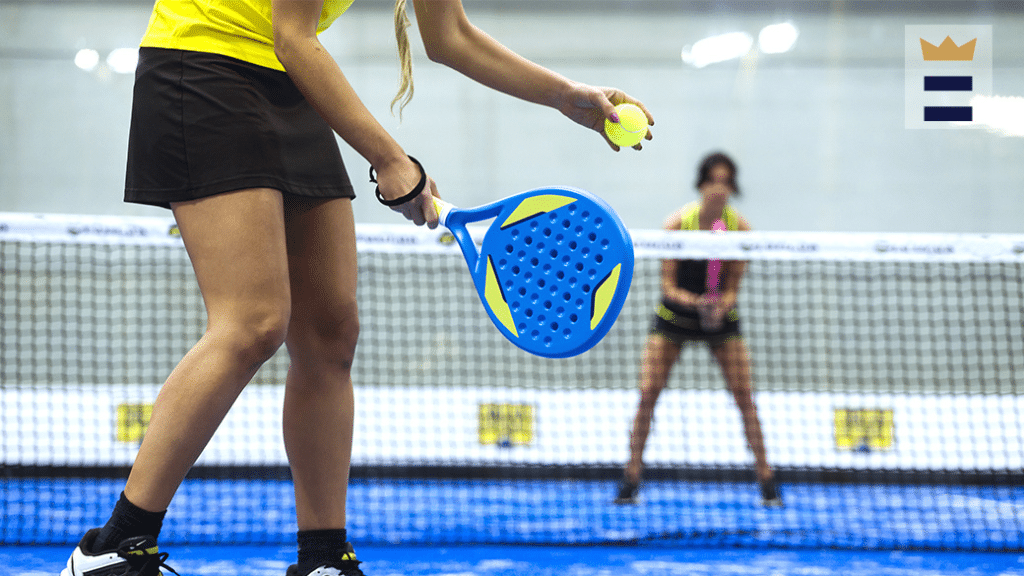Yes, you can play pickleball on grass, but it’s not the ideal surface for the game due to several factors (less bounce, uneven surfaces, and difficulty seeing court lines), and neither is it recommended by the USAPA. Pickleball is typically played on hard, smooth surfaces like asphalt or concrete.
While it’s technically possible to play pickleball on grass, it’s not ideal and comes with some challenges. However, some dedicated players have created courts and leagues for pickleball on grass surfaces. The U.S. Lawn Pickleball Association is an organization of enthusiasts who promote pickleball played on grass.
Challenges of Playing Pickleball on Grass
There are a few reasons why playing pickleball on grass is not recommended, especially for serious or competitive play:
- Inconsistent bounces – The natural unevenness of grass means the ball won’t bounce consistently. This can make it frustrating and difficult to play effectively, particularly for beginner players.
- Poor visibility of lines – The lines marking a pickleball court can be difficult to see on grass, making it difficult to tell if a ball is in or out. This can lead to disputes.
- Grass height and mowing patterns affect play – The ideal grass height is 1-2 inches. Mowing in different directions creates an inconsistent surface.
- Slippery surface – Grass can be slippery, particularly when wet. This increases the risk of slides and falls. Proper footwear helps, but doesn’t eliminate the risk.
- Ball performance – Pickleballs are designed for smooth hard courts. On grass, they tend to bounce lower and spin less, altering the way the game is played.
Alternatives to Grass Courts
For these reasons, it’s better to play pickleball on a dedicated court surface. Here are some options:
- Badminton court – badminton is played in the air, so the court surface is less important.
- Pickleball courts – Many parks, schools, rec centers, and Pickleball complexes now have courts designed specifically for pickleball complete with permanent markings.
- Tennis or basketball courts – These can easily be converted into Pickleball courts by setting up portable nets and marking temporary lines.
- Driveways or sidewalks – Flat concrete surfaces work well for casual Pickleball with portable equipment.
- Sandy Pickle – A popular variation uses modified rules for sand or grass. No bounces are allowed, putting the focus on volleys.
Making Grass Courts Work
To create a smoother surface, water and roll the grass area well before playing. Allowable modifications like lowering the net height can also help compensate for the different bounce.
For temporary markings on grass, use chalk powder or portable cones to designate playing lines and boundaries. Avoid wood paddles, as composite materials give better pop off grass.
If you do want to play on grass, there are some things you can do to improve the experience:
- Level the surface as much as possible.
- Mow the grass very short.
- Use bright temporary markings for lines.
- Wear proper footwear with good traction.
- Use a lower net height.
- Take extra care with footwork and movements.
- Focus on volleys rather than bouncing.
- Don’t take it too seriously and have fun!
Consider eliminating bounces entirely and play “no-volley” grass pickleball. This variation uses volleys instead of groundstrokes as the grass surface affects the bounce.
While grass courts aren’t ideal, pickleball can still be enjoyed on them for casual games. But for competitive play, a smooth hard surface gives you the true pickleball experience.



